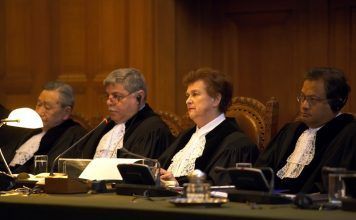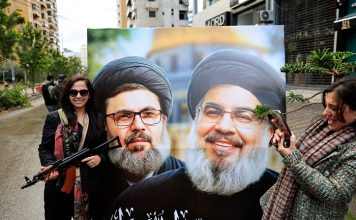By Kayhan Life Staff
Girls and women across Iran removed their headscarves in public, defying the mandatory hijab rule on July 12, designated as “Hijab and Chastity Day” by the Islamic Republic.
The day marks the anniversary of a large protest led by conservative clerics on July 12, 1935, at Gohardasht Mosque, in the holy city of Mashhad, the capital of the northeastern province of Khorasan, against a decree by the late Reza Shah Pahlavi (1878-1944), ordering all men to wear European-style bowler hats.
A few months later, on January 8, 1936, Reza Shah issued a decree known as “Kashf-e Hijab,” banning all Islamic veils, including headscarves and chador (full-length veil).
This year, girls and women took to social media in solidarity against the mandatory hijab by posting messages and videos with the #Hijab_No_Hijab.
In a show of support for Iranian women and the #Hijab_No_Hijab campaign, Crown Prince Reza Pahlavi tweeted: “Iran will not be free as long as Iranian women are not free. For the past 43 years, Iranian women have been fighting to regain their inalienable rights, especially the freedom to choose what to wear. Iranian men must stand shoulder to shoulder on the frontline with women. #Hijab_No_Hijab”
#گزارشگرمنوتو: من به کمپین #حجاب_بی_حجاب میپیوندم
…
WhatsApp/Telegram: +44 7590 899 999 pic.twitter.com/SOkhq3tFvy— اتاق خبر منوتو (@ManotoNews) July 12, 2022
A social media user, @zizikhanoum, tweeted: “A speech by [the late Mohammad Reza] Shah on women’s rights. He was a progressive who believed in equal rights for men and women before many Western countries did. #Hijab_No_Hijab. Reza Shah, God bless your soul.”
The tweet included footage of the Shah speaking about women’s rights in front of a large crowd in Iran.
An undated video clip included in a tweet by the London-based Persian-language Manoto TV, @ManotoNews, showed an unidentified woman driving a car. The footage’s caption read: “I join the Hijab-No-Hijab campaign.”
“Today, July 12, I joined the #Hijab_No_Hijab campaign,” the woman said, removing her headscarf.
“[Ayatollah Ruhollah] Khomeini [the founder of the Islamic Republic] said a ruling state becomes a dictatorship when it loses the support of its people,” the woman added.
A social media user, @N0O0NO0ON, tweeted on July 12: “I left the gym and now am going home. The Guidance Patrol [Morality Police] van had just arrived at the square. I passed them with no problem. [A person] in a passing car told me to wear a helmet. I have ridden my bicycle on the streets for one-year-and-half, wearing no hat or scarf. I want to be in their face today.”
The tweet included an undated video showing an unidentified woman riding a bicycle, wearing no headscarf.
“Well, I think some stupid people still think we only shout slogans,” the woman in the clip said. “I just want to show that whatever one does, there is always someone who talks nonsense.”
A message by someone on a Twitter thread posted on @1500tasvir said: “I could do nothing special, given we live in a small town where everyone knows each other. I could not do what I wanted: protest among a large crowd. So, the only thing I could do was to hang this scarf and a note on a tree outside the house of the Friday prayer leader of our town.”
The tweet included a picture of a scarf tied around a tree and a note pinned above it, saying #Hijab_No_Hijab.
Another picture on the same Twitter thread posted on @1500tasvir was of a young woman with no headscarf. Her face was blurred to protect her identity. She seemed to stand in front of a massive poster of the late Ayatollah Khomeini, the founder of the Islamic Revolution, and Iran’s Supreme Leader, Ayatollah Ali Khamenei.
Several videos on social media show men joining women in protests against the mandatory hijab.
A social media user, @shahriyar_shams, tweeted on July 12: “I will go out today, and will take action if I see Morality Police detaining anyone in the street, even if no one joins me. I believe this is my duty, and this action will not end today. I cannot decide for others, but I will be grateful to anyone who can help me.”
A tweet by @KarmelMelamed included two photographs of wall graffiti taken reportedly in Mashhad and Qom saying “#Hijab_No_Hijab.”
“These are various signs of street graffiti from my compatriots in the Iranian cities of Qom and Mashhad calling on all Iranians to take part in tomorrow’s national call for civil disobedience by women not wearing their hijab or Islamic head coverings,” the tweet said.
These are various signs of street graffiti from my compatriots in the Iranian cities of Qom & Mashhad calling on all Iranians to participate in tomorrow's national call for civil disobedience by women not wearing their hijab or Islamic head coverings. #NoHijabDay #حجاب_بی_حجاب pic.twitter.com/ARhWU1yM8M
— Karmel Melamed (@KarmelMelamed) July 11, 2022
Social media have been flooded with images of Morality Police and authorities harassing, arresting, and brutalizing girls and women who have reportedly violated the mandatory hijab.
The U.S.-based National Union for Democracy in Iran (NUFDI) tweeted on July 8: “This is the fear the women of Iran are subjected to every day by the ‘morality’ police. This is Iranian reality. Stand with Iranian women as they stand up for their rights.”
The tweet included a photograph of the Morality Police detaining and putting two women in a van for allegedly violating the mandatory hijab. The incident reportedly happened in the 2000s.
Since coming into office nearly a year ago, President Ebrahim Raisi and his cabinet have systematically restricted women’s individual and civil rights. The government has recently introduced several new measures to enforce mandatory “Hijab and Chastity” measures in government offices and public places, including banks, metro, and buses.
Mr. Raisi recently ordered the Supreme Council of the Cultural Revolution to enforce the “Hijab and Chastity Law,” the Tehran-based Entekhab newspaper reported on July 6.
“Regarding the hijab and chastity, we urge the Supreme Council of the Cultural Revolution and other institutions to enforce the law passed by the Majlis, and the law passed by the Supreme Council of the Cultural Revolution in 2005,” Entekhab quoted President Raisi saying.
It is noteworthy that while the hijab became compulsory after the 1979 Islamic Revolution, the Supreme Council of the Cultural Revolution, which adopted the “Hijab and Chastity” measure in 2005, is not a legislative body and cannot pass any laws.
Many of the country’s senior officials have followed President Raisi’s directive, ordering ministries and agencies under their control to enforce mandatory hijab and the “Hijab and Chastity” scheme.
During a meeting of the Supreme Judicial Council on July 11, the Head of Iran’s Judiciary, Gholamhossein Ejei, accused “sworn enemies of the Islamic Republic” of undermining the mandatory hijab, adding that social media contents that opposed the hijab were “organized and controlled by foreign services and the enemies of the Islamic Republic.”
“The discussion whether someone wears a hijab, or a person wears inadequate, or full hijab is important and has its place,” Mr. Ejei argued. “However, it is necessary and important for the intelligence agencies to discover and identify those who work behind the scene to promote corrupt and immoral behavior in society.”
In comments reported by the Tehran-based Young Journalist Club (YJC) news agency on July 12, Iranian Minister of Culture and Islamic Guidance, Mohammad Mehdi Esmaili, said: “Hijab is part of Iranian social identity.”
“Chastity and hijab are woven into the Iranian social tapestry,” Mr. Esmaili argued. “That is why the enemy has been trying to reduce this part of our identity into a political issue. They [the enemy] believe it can control the country by polarizing our society.”
Mr. Ejei and Mr. Esmaili conveniently disregard the fact that women form half of the country’s population, many of whom have spoken out against mandatory hijab in the past 43 years. According to Ejei, “media exposure” threatens “Iran’s hijab identity.”
Other officials have joined the state’s campaign to restrict women’s rights.
In comments reported by the Tehran-based Hamshahri newspaper on July 8, Seyyed Ahmad Khatami, Tehran’s Friday prayer leader and a member of the Assembly of Experts, said: “Most hijab violators are wives and children of thieves and others guilty of financial corruption.”
In its July 12 issue, Hamshahri compared the opponents of mandatory hijab to those “who tried to incite unrest by blocking roads, breaking windows, and setting fire to banks,” adding “they are calling for the demise of hijab today.”
Qom’s Friday prayer leader, Seyyed Mohammad Saeedi, also called on all government offices to enforce mandatory hijab in the workplace.
Saleh Rahimi, the Governor of Bushehr, the capital of the southern province of Bushehr, went even further.
“Male and female employees in government offices must work in separate rooms. Our female colleagues must wear a chador [full-length veil] when attending meetings at the City Hall,” Governor Rahimi said. “Any manager failing to enforce the rule will be reprimanded.”
In a letter dated June 26, the deputy prosecutor of the holy city of Mashhad urged the police department to ban women who do not adhere to strict hijab from using the metro.
According to some reports, at least 25 government agencies receive special funds to enforce the “Hijab and Chastity” scheme.
Iranian women remain resolved and defiant, despite the Islamic Republic’s oppressive tactics to deprive them of their fundamental civil, human, and legal rights.
Woman’s rights activists released a statement, noting that “Hijab and Chastity Day” gave the Islamic Republic another “excuse to oppress people, especially Iranian women.”







